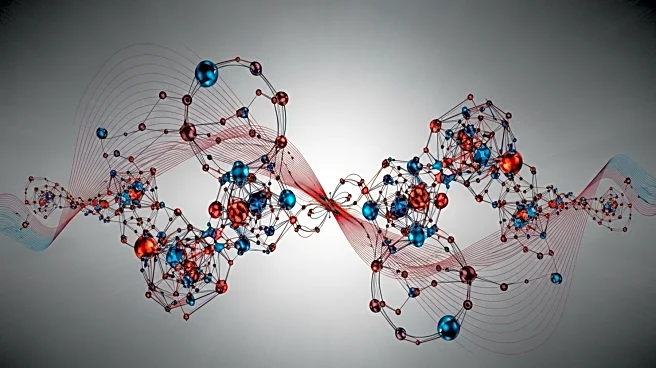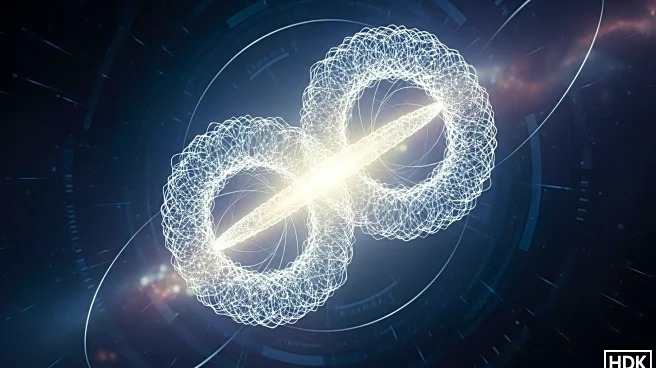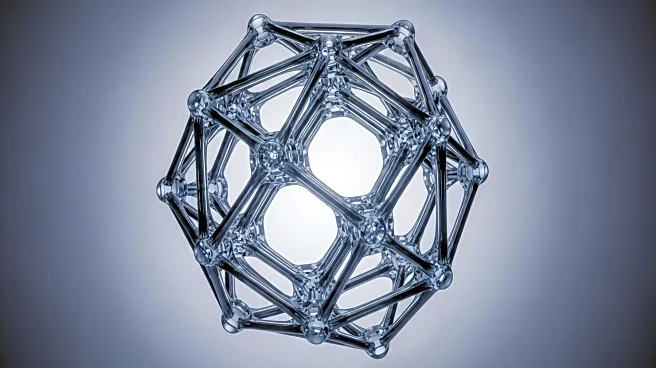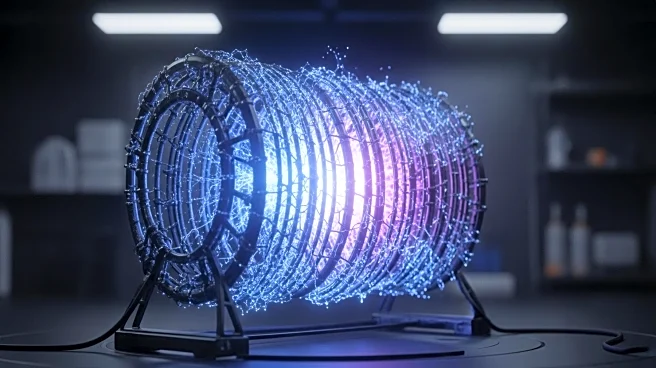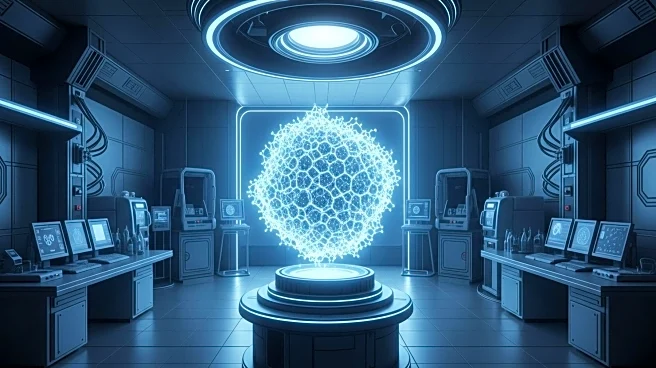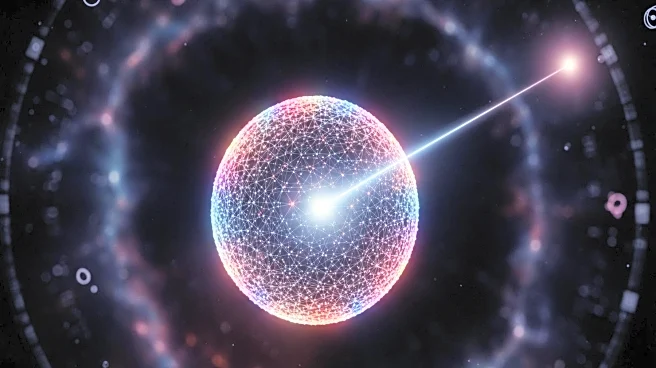What's Happening?
Researchers have made significant progress in understanding high-temperature superconductors, particularly focusing on cuprate materials. A team led by Masafumi Horio at the University of Tokyo has analyzed new crystals similar to the highest temperature superconductor, Hg1223, using angle-resolved photoemission spectroscopy (ARPES). This technique maps electronic energy levels, providing insights into energy gaps and electron interactions. The study revealed that the superconducting gap in the outer layers of the (Hg,Re)1223 cuprate is higher than in Bi2223, contributing to a higher critical temperature of 130 K. This research, published in Physical Review Letters, highlights the importance of enhanced pairing energy in the outer plane for achieving high critical temperatures in Hg-based trilayer cuprates.
Why It's Important?
Understanding the properties of high-temperature superconductors is crucial for advancing technologies that rely on superconductivity, such as magnetic resonance imaging (MRI) and quantum computing. The findings from this study could lead to the development of more efficient superconducting materials, potentially reducing energy losses in power grids and improving the performance of electronic devices. The research also opens avenues for further exploration of superconducting materials, which could have significant implications for industries that depend on high-efficiency energy transmission and storage.
What's Next?
The study paves the way for more detailed investigations into the electronic properties of superconductors using ARPES. Future research will focus on quantifying the couplings within cuprate interlayers and intralayers, aiming to identify the essential components for achieving high critical temperatures. These efforts could eventually lead to breakthroughs in overcoming current limitations of superconductivity at ambient pressure, potentially revolutionizing applications in energy and technology sectors.
Beyond the Headlines
The research into high-temperature superconductors also touches on broader scientific questions about electron interactions and material properties. The use of ARPES provides a deeper understanding of the fundamental physics governing superconductivity, which could influence theoretical models and experimental approaches in condensed matter physics. Additionally, the study highlights the collaborative nature of scientific research, involving international teams and cross-disciplinary expertise.
